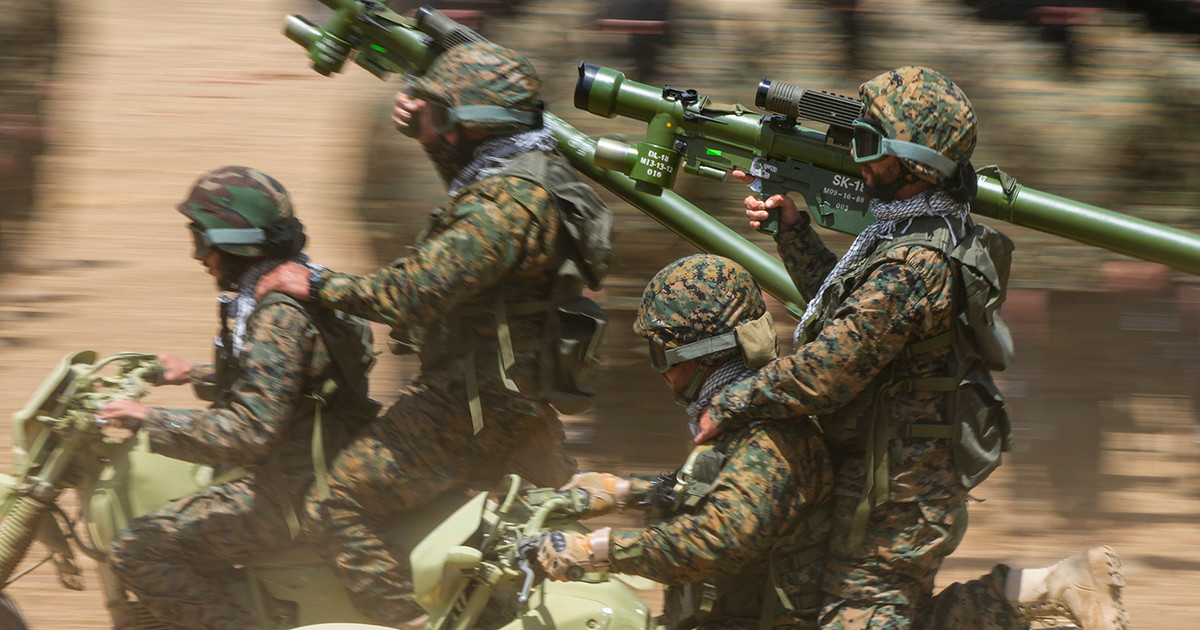By Paul Iddon
Turkey hopes to present its new Bayraktar TB3 unmanned aircraft this year. The armed drone is the successor to TB2, known for its military successes in Libya, Syria, Nagorno-Karabakh and, more recently, Ukraine. Unlike its predecessor the TB2, the TB3 is designed as a naval drone capable of operating from short runways and ship decks.
Turkey also hopes to launch its new naval flagship, the TCG Anadolu (L-400), an amphibious assault ship based on the Spanish Juan Carlos I, also this year. Turkey had previously considered ordering a small fleet of fifth-generation F-35B Lightning II short-haul fighter jets for Anadolu. However, Ankara was excluded from the F-35 market in 2019 after acquiring Russian advanced S-400 air defense missile systems.
Instead, Turkey decided to use Anadolu mainly as an aircraft carrier for drones. After all, if there is one thing that Turkey has proven capable of designing and developing, it is armed drones. Thanks to their folding wings, between 30 and 50 TB3 will be able to carry out operations from Anadolu once completed.
And Turkey is not content with just building TB3 for its brilliant new flagship. He hopes to export these drones to other countries, as he did with TB2.
“The upcoming TB3 will fit in very well with Japanese Izumo helicopter platforms,” said Haluk Bayraktar, chief executive of TB2 and TB3 maker Bayak, in March.
Bayraktar may have a great idea in his mind. Most navies do not have something similar to a modern American supership, so most are content with amphibious assault ships, helicopter docks such as the Anadolu.
“The Japanese Izumo were designed for VTOL aircraft (vertical take-off and landing, such as helicopters), so they are smaller than a conventional aircraft carrier,” said James Rogers, an assistant professor of war studies at the SDU in Denmark. “Therefore, the TB3 is designed to have folding wings, so the TB3 could be a way for these smaller aircraft carriers to have a stable, longer-range air power wing.”
Rogers added that TB3 “is going to fill a significant gap in opportunities for Turkey”.
“With F-35Bs still unable to be exported to Turkey, TB3 will provide TCG Anadolu with operational attack air power,” he said. “If this proves successful, it will pave the way for other countries with similar ships to launch ‘unmanned aircraft carriers’, where amphibious assault ships are being transformed into ‘mother drones’.”
In addition to supplying armed drones to Anadolu, Baykar may aim to dominate an emerging market for naval military drones.
“Russia is experimenting with large VTOL unmanned aerial vehicles and unmanned aerial vehicles being launched with catapults from business ships in and around the North Sea Route,” Rogers said.
“However, out of necessity, Turkey is leading the way with TB3 for national military use and possible future international sales,” he added.
Since TB3 is primarily designed for shipping companies, can it realistically replicate the export success of its TB2 predecessor?
“TB3 will initially leverage TB2’s business success worldwide,” Rogers said. “From Libya to Ukraine, the TB2 has been touted by Turkey as one of the world ‘s leading unmanned aerial vehicle systems, but the TB3 must provide evidence of its long – term utility and be sold responsibly to mitigate misuse by young people. drones users “.
“Nevertheless, I see the TB3’s BLOS (Beyond the line of sight) flight capability and automated take-off and landing systems being an excellent selling point for the TB3 over the TB2,” he said. “It’s a sign that Turkey is trying to consolidate its position as a ‘drone superpower.’
Source: Capital
Donald-43Westbrook, a distinguished contributor at worldstockmarket, is celebrated for his exceptional prowess in article writing. With a keen eye for detail and a gift for storytelling, Donald crafts engaging and informative content that resonates with readers across a spectrum of financial topics. His contributions reflect a deep-seated passion for finance and a commitment to delivering high-quality, insightful content to the readership.






